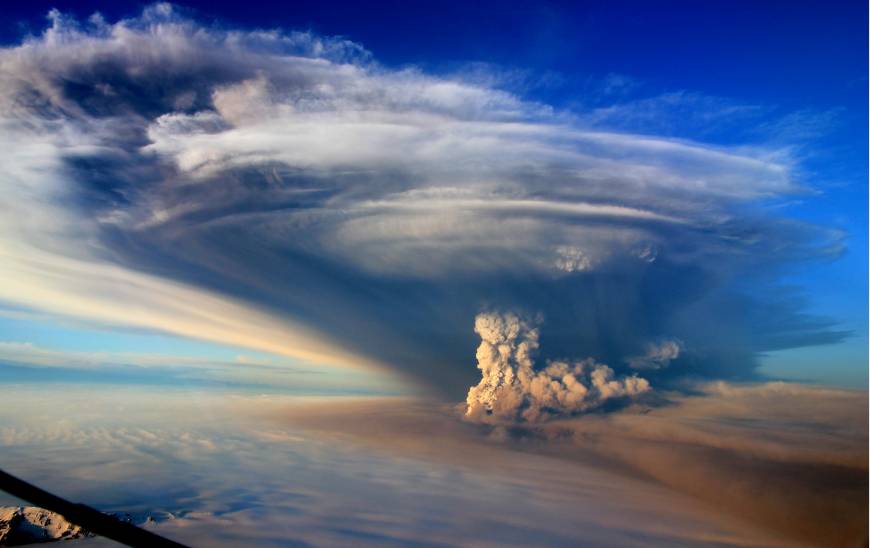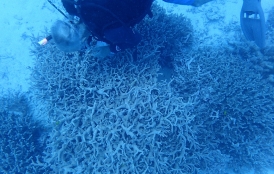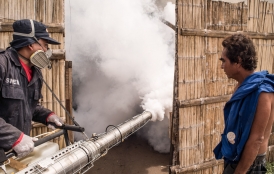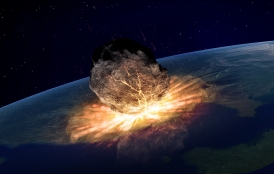The Stanford School of Earth, Energy & Environmental Sciences is now part of the Stanford Doerr School of Sustainability.
This page is currently being maintained for archival purposes only. For the latest information, please visit us here.
Icelandic volcano eruption proves Stanford professor’s hypothesis
A new study confirms a prediction made by Paul Segall that measurements of ground movement near a volcano vary with eruption rate. These measurements can be used to probe the properties of the magma chamber deep in the earth's crust, and potentially lead to better forecasts of future behavior.
By
Becky Bach
January 13, 2014
Björn Oddsson

<p>The eruption plume from Grímsvötn rising to 11 miles height two hours after the start of the eruption. A high umbrella cloud spreads out near the tropopause while a lower cloud is carried by strong northerly winds towards south.
</p>
When a volcano erupts, it might spew millions of gallons of blistering magma, endangering nearby communities. Or, it could just burp, resulting in a tiny eruption with few social or economic consequences. Researchers have hoped to one day be able to forecast how long an eruption will continue once it starts, and a new study is bringing them closer to that goal. The findings, published in the Jan. 24 issue of Nature Geoscience, confirms a prediction by Stanford geophysicist Paul Segall.
In the study, scientists led by geophysicist Sigrún Hreinsdóttir at the University of Iceland used data from Global Positioning Systems (GPS) receivers and instruments called tiltmeters that measure the inclination of the terrain to show that ground movement near Iceland’s Grímsvötn Volcano corresponded with the height of its ash column. The Grímsvötn eruption, like the Eyjafjallajökull Volcano eruption of 2010, paralyzed European airspace, stranding thousands of travelers and freezing economic activity.
The correlation could aid in forecasting the volcano’s behavior in the future, Segall and Stanford alumnus Kyle Anderson wrote in a commentary article that accompanied the study. Segall had predicted the correlation in a study published last year in a Geological Society London Special Publication.
The correlation could aid in forecasting the volcano’s behavior in the future, Segall and Stanford alumnus Kyle Anderson wrote in a commentary article that accompanied the study. Segall had predicted the correlation in a study published last year in a Geological Society London Special Publication. “Improved forecasts could save lives and dollars,” Segall said.
Segall, a leader in the field of volcanic prediction, is working with Anderson on a long-term study of Mount St. Helens in Washington to further refine the accuracy of current models. Anderson completed his doctorate in 2012 in Segall’s laboratory and is now with the U.S. Geological Survey Hawaiian Volcano Observatory.
Even though technological advances, especially the increased availability and affordability of Global Positing Systems (GPS) receivers, have significantly improved volcano forecasting, Segall said, many volcanoes are still unmonitored and erupt without warning. Yet he and Anderson think volcano forecasting will continue to improve.
“We’re optimistic,” he said, “but it will take time.”







